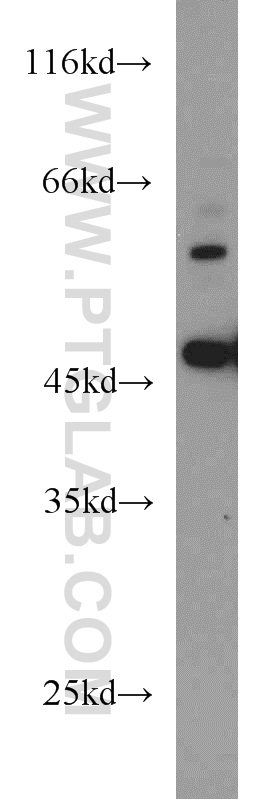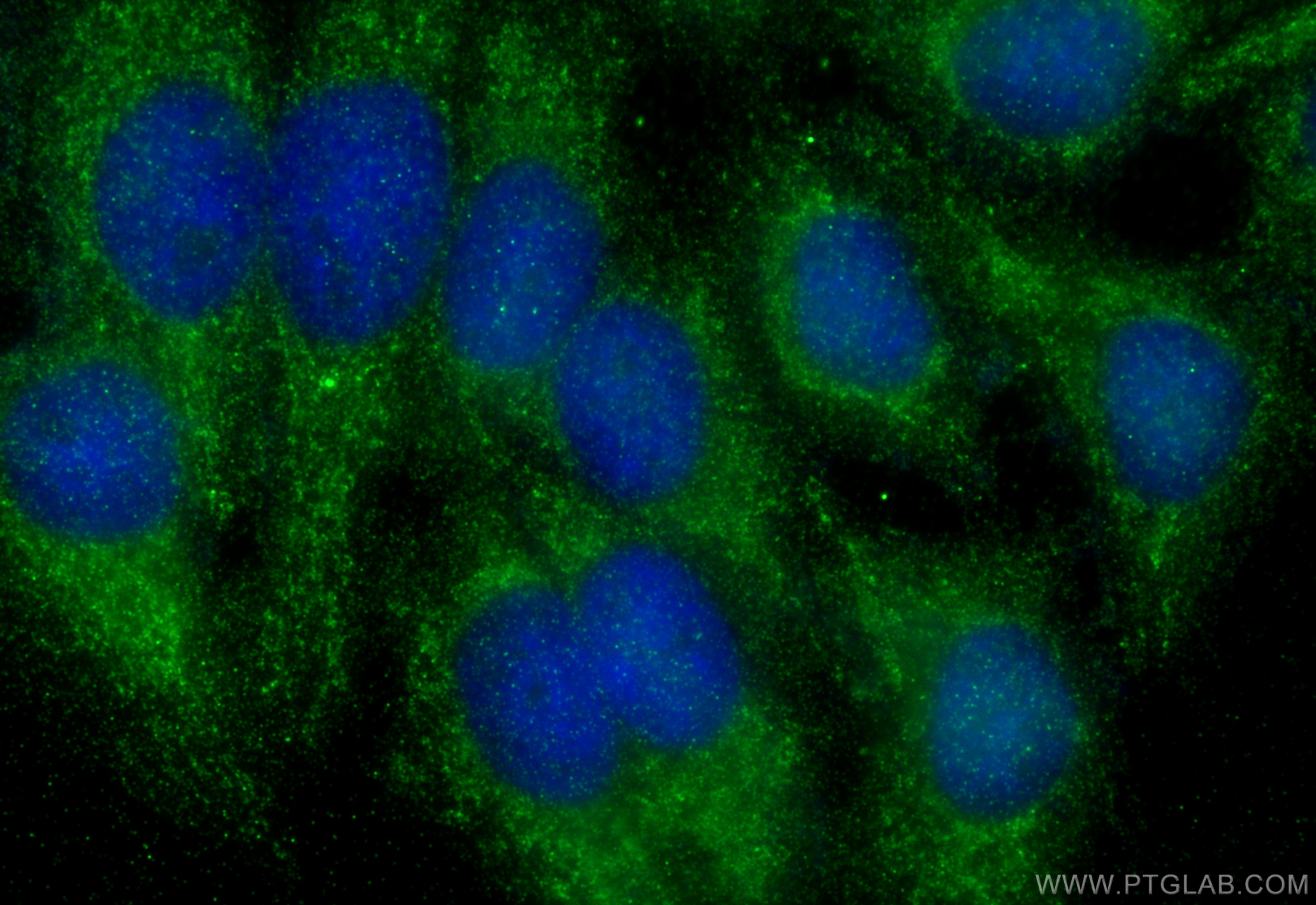验证数据展示
经过测试的应用
| Positive WB detected in | HEK-293 cells |
| Positive IF/ICC detected in | HepG2 cells |
推荐稀释比
| 应用 | 推荐稀释比 |
|---|---|
| Western Blot (WB) | WB : 1:500-1:1000 |
| Immunofluorescence (IF)/ICC | IF/ICC : 1:50-1:500 |
| It is recommended that this reagent should be titrated in each testing system to obtain optimal results. | |
| Sample-dependent, Check data in validation data gallery. | |
发表文章中的应用
| WB | See 1 publications below |
| IHC | See 1 publications below |
产品信息
17142-1-AP targets B3GALNT2 in WB, IHC, IF/ICC, ELISA applications and shows reactivity with human, mouse, rat samples.
| 经测试应用 | WB, IF/ICC, ELISA Application Description |
| 文献引用应用 | WB, IHC |
| 经测试反应性 | human, mouse, rat |
| 文献引用反应性 | human, mouse |
| 免疫原 |
CatNo: Ag10907 Product name: Recombinant human B3GALNT2 protein Source: e coli.-derived, PGEX-4T Tag: GST Domain: 167-500 aa of BC029564 Sequence: NDVGFQRNITVKLYQAEQEEALFIARFSPPSCGVQVNKLWYKPVEQFILPESFEGTIVWESQDLHGLVSRNLHKVTVNDGGGVLRVITAGEGALPHEFLEGVEGVAGGFIYTIQEGDALLHNLHSRPQRLIDHIRNLHEEDALLKEESSIYDDIVFVDVVDTYRNVPAKLLNFYRWTVETTSFNLLLKTDDDCYIDLEAVFNRIVQKNLDGPNFWWGNFRLNWAVDRTGKWQELEYPSPAYPAFACGSGYVISKDIVKWLASNSGRLKTYQGEDVSMGIWMAAIGPKRYQDSLWLCEKTCETGMLSSPQYSPWELTELWKLKERCGDPCRCQAR 种属同源性预测 |
| 宿主/亚型 | Rabbit / IgG |
| 抗体类别 | Polyclonal |
| 产品类型 | Antibody |
| 全称 | beta-1,3-N-acetylgalactosaminyltransferase 2 |
| 别名 | Beta-1,3-GalNAc-T2, Beta-1,3-N-acetylgalactosaminyltransferase II, EC:2.4.1.313, UDP GalNAc:beta 1,3 N acetylgalactosaminyltransferase 2, UDP-GalNAc:beta-1,3-N-acetylgalactosaminyltransferase 2 |
| 计算分子量 | 500 aa, 57 kDa |
| 观测分子量 | 55-60 kDa |
| GenBank蛋白编号 | BC029564 |
| 基因名称 | B3GALNT2 |
| Gene ID (NCBI) | 148789 |
| RRID | AB_2063040 |
| 偶联类型 | Unconjugated |
| 形式 | Liquid |
| 纯化方式 | Antigen affinity purification |
| UNIPROT ID | Q8NCR0 |
| 储存缓冲液 | PBS with 0.02% sodium azide and 50% glycerol, pH 7.3. |
| 储存条件 | Store at -20°C. Stable for one year after shipment. Aliquoting is unnecessary for -20oC storage. |
实验方案
| Product Specific Protocols | |
|---|---|
| IF protocol for B3GALNT2 antibody 17142-1-AP | Download protocol |
| WB protocol for B3GALNT2 antibody 17142-1-AP | Download protocol |
| Standard Protocols | |
|---|---|
| Click here to view our Standard Protocols |



